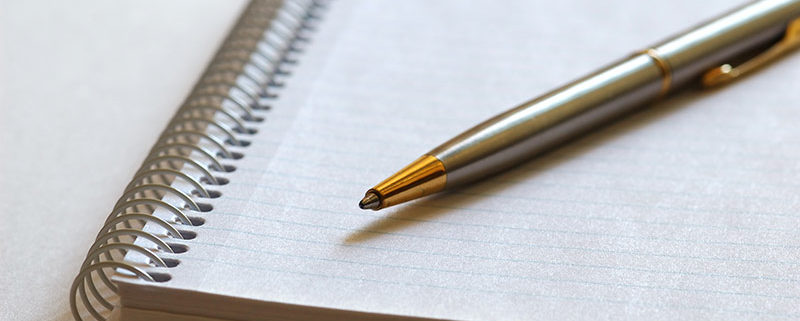1. Schedule Your Paper
In this state of time-limited anxiety, you’re going to have the vicious urge to dive straight into writing. Don’t do it. Resist. Abort. Pace yourself first- chart out a decent amount of time in which you think you can write this paper. If you’re a slow, hesitant writer, an hour per page is the maximum I would ever suggest. In all likelihood, you can probably write a fairly decent ten to twelve page paper out in about five hours. Set this pace for yourself and then work carefully, but briskly. Let’s say you’ve allotted two hours to write a six to eight page essay. It’s a crunch, but you can manage. Spend a half hour researching your topic, a solid hour explaining what you’ve learned in paper format, and then spend the last half hour editing and compiling a bibliography.
2. Thesis and Introductory Paragraph
The thesis is the framework of the entire paper, and a good thesis automatically lends a more academic, positive outlook to the rest of your essay. Your thesis should very briefly outline the points you will make in the paper to support your claim. The thesis of your essay should always have some sort of claim, goal or overarching summary. Let’s say you were given the topic to analyze a movie and then compare it to the decade it was produced in. First, decide what you want to accomplish with your paper. It’s to explain how the movie represents the decade it was produced in. You need to convince your reader that a movie can be an accurate portrayal of its decade, even if the setting was in a different time period. You should avoid flowery prose in a thesis and instead be concise and simple. Place your thesis at the end of the introductory paragraph, after four or five quality sentences that roughly very basic ideas and facts about the topic. Don’t give it all away though- you want to draw your reader in.
“The movie How To Marry A Millionaire is an accurate representation of the nineteen fifties through its rendering of family values, consumerism and portrayal of women.”
You can either begin writing about the first of those three subtopics in the next paragraph, or according to your needs or instructor’s requirements, you can follow with a paragraph describing the topic in more detail to allow the reader to follow along with more ease. Afterward, devote a solid analysis and description to each of the three subtopics. Each subtopic should have around three sources that compliment what you’re saying, but do not replace your ideas. For a Thesis to be as solid as possible, always have at least three subtopics that revolve around your main topic to create a good basis for your argument or ideas. Any less is too weak and the thesis will be unable to stand on its own.
3. Research
Here is where your essay will live or die. The more research you can provide, without drowning your TA or professor in useless facts, the better. You need to prove that you’ve thought deeply about your topic and sifted through various resources over a period of several weeks, even if you haven’t. If your paper requires book sources, utilize your campus library. If not, Google is your savior. Plug in your topic followed by your subtopic keywords. Stay on the first three pages and peruse carefully. Don’t click through every search option. Look at the title, summary and web address carefully. You want good, solid sources. If you use a quote or fact from the web, follow it with an in text citation (if your college uses footnotes, use those instead). Generally an in text citation will have the author’s last name followed by the page number with a single space in between, like so (Smith 56).
Some of the time, Google will not return sources that are academic in nature, and so you must turn to databases- I recommend you use databases more than Google searches, simply because the wealth of knowledge is far more expansive and most likely to be legitimate. Log on to your school’s library webpage and search for database options; I guarantee your school’s library will have several to choose from, and from there, you will have access to many scholarly schools that you can incorporate into your paper.
4. Body Paragraphs
Once you’ve established your thesis and introductory paragraph, move on to the body paragraphs. I find this format to be the most helpful for outlining a simple but quality paragraph.
Sentence 1: Summary of Subtopic point- Family values were important to American’s of the nineteen fifties….
Sentence 2: Analysis- quickly analyze why you think sentence one is true.
Sentence 3: Fact- back up sentence two and lend support to sentence one through the use of a relevant fact. Make sure you cite your source correctly.
Sentence 4: More analysis.
Sentence 5: Quote- Quotes from credible sources can be powerful, but should be used sparingly, otherwise your own words will be drowned out and the paper will be little more than cut and paste plagiarism. Find a quote that says something similar to your analysis and use it as support for your ideas. Do not let it replace your ideas or be the springboard for them.
Sentence 6: Analyze the quote and how it relates to the point you’re making with your subtopic.
This basic framework for a body paragraph makes it easy to plug in your sentences. You must be careful to provide plenty of your own thoughts and ideas, and use quotes to compliment them. Facts support your ideas and quotes compliment them. Remember that. Plagiarism is stealing, and it’s downright lazy and one of the rudest things you can do to another person. Not only does it have very serious consequences, but it’s just not cool. Don’t do it.
5. Conclusion
The conclusion of your paragraph needs to restate all your previous ideas. Summarize your paper basically, avoiding repetitive phrases and already stated facts or ideas. Mention your subtopics again and reaffirm how they support your overarching topic. Leave your reader with a sentence that makes them think about the topic for a moment after they’ve finished the paper- a question or a thought-provoking sentence, for example.
6. Troubleshooting
If you’re having trouble with your paper and feeling stuck, go for a quick five minute run. Run briskly and breathe deeply. On your return, drink some water and eat a light snack. Get back to work. You can write this paper, and you will.
7. Finishing Up
Okay, so you’ve churned out as many pages or words as you need to. You’re done with the bulk of the work and over the hump. Now you can start editing and revising. Make this quick. Read through your paper silently first, fixing any mistakes you notice. Now, compile your bibliography- collect all your sources, format them properly and quickly using easybib.com and get a quick drink. Come back to your paper and read it out loud, as if you’re presenting it to an audience. This helps you catch any other mistakes you might have missed. Shore up any weak arguments with a quick sentence containing a source or with more analysis or argument. Add a title if necessary. If you don’t have time to come up with a creative title, be boring, but be true. For example: “How to Marry a Millionaire: Cultural Connections in the Nineteen Fifties.”
Simple, quick, done. Writing a paper is a formula with specific components that you just need to plug data into, and can easily be simplified beyond what many stressed college students may think. Take a deep breath, break things down, find your data, and insert it into the proper locations. You will not get the grade you probably could have gotten if you’d started well in advance, but you won’t flunk the assignment either and you can alleviate some of the dread that accompanies writing a paper last minute. Now, get some sleep and try to plan better next time.
Need help writing your last minute paper? Click here
Originally published here: https://owlcation.com/academia/How-to-Write-Any-College-Paper-Last-Minute





 Writing Experts
Writing Experts